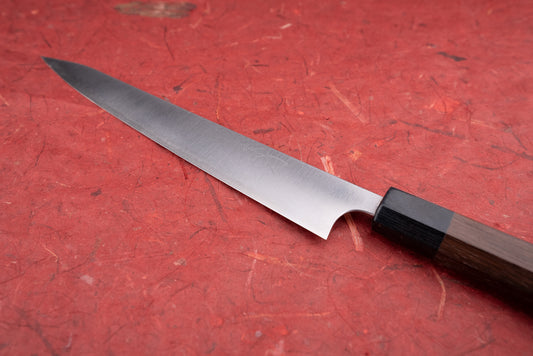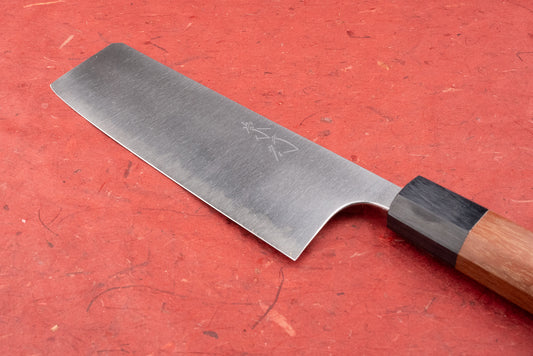-
Shibata Koutetsu Type 3 AS Migaki Sujihiki 240mm
Regular price €275,00 EURRegular priceUnit price per -
Shibata Koutetsu Type 3 AS Migaki Santoku 165mm
Regular price €197,00 EURRegular priceUnit price per -
Shibata Koutetsu Type 3 AS Migaki Gyuto 210mm
Regular price €258,00 EURRegular priceUnit price per -
Shibata Koutetsu Type 3 AS Migaki Gyuto 240mm
Regular price €275,00 EURRegular priceUnit price per -
Shibata Koutetsu Type 3 AS Migaki Petty 135mm
Regular price €180,00 EURRegular priceUnit price per -
Shibata Koutetsu Type 3 AS Migaki Nakiri 165mm
Regular price €197,00 EURRegular priceUnit price per
About Shibata Koutetsu ASs
We think this is one of the sharpest knives we’ve ever had our hands-on. True story.
Every knife in this line has an angle cut tip like a Bunka or Kiritsuke, so they have plenty of attitudes and a pretty flat cutting-edge. The slanted end is where it gets the name “Koutetsu”. This was the name of the first iron clad destroyer in the Japanese naval fleet. The Koutetsu, built 1864, had a slanted bow designed for ramming other ships. These knives look like a ship but don’t feel like one. These are light and thin and fine; they could be the official knives of the F1. The finish is unique too: it has a very fine texture so it slips through food super easy.
If you take the recipe for Aogami #1 or #2 and tweak it a bit you can make really special steel called Super Blue steel. This is high carbon steel which can rust, but takes a better edge and holds it longer than most stainless steel. Aogami Super is extra special, as the addition of chromium slows rusting and the molecular structure is more elastic which can reduce the chances of chipping.











